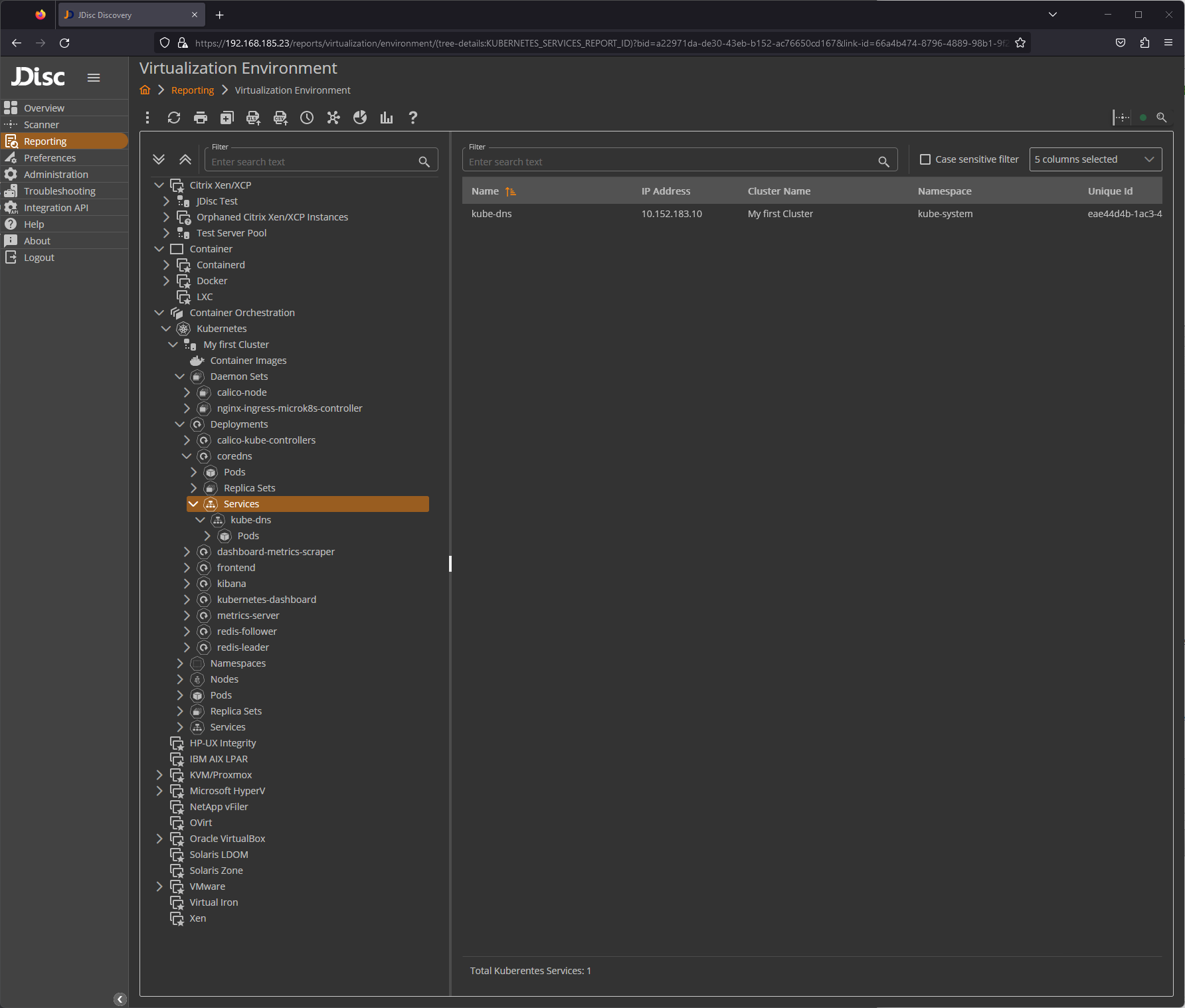JDisc Discovery scans Kubernetes Cluster

Dear JDisc users,
we haven’t written new blog posts for a while due to the efforts to redesign our website. But, now as the new web page is released, we are going to continue to inform about new features, developments, or changes in the network discovery universe…
Today, I would like to highlight a new feature that has already been implemented for several weeks. We have added support to scan Kubernetes clusters, their major artifacts, and their relationships! That also includes a reimplemented scan of Docker and Containerd containers.
Video
We created a short video that explains how the Kubernetes scan works and how to review the data.
Configuration
In order to access Kubernetes clusters, you need an API token. Ask your Kubernetes admin to provide the API token to scan the cluster. We only read information and therefore a read-only token should be sufficient.

Once the API is configured and we detect a Kubernetes cluster on a server, then we try to use the configured token to connect to the cluster and read information about the cluster itself, its artifacts, and relationships. We will be collecting information and relationships for
- cluster nodes
- namespaces
- daemon sets
- replica sets
- PODs
- deployments
- services
- containers and their images
Furthermore, we are collecting information about the relationships between the artifacts. For instance, which PODs are hosted on what node?
Reporting
Review the data in our virtualization explorer once the data has been collected. Check out the artifacts and relationships from within our virtualization eplorer!

We hope you like this new feature and we are looking forward to getting feedback on possibly missing items or artifacts that might be important for you!
Cheers,
Thomas
